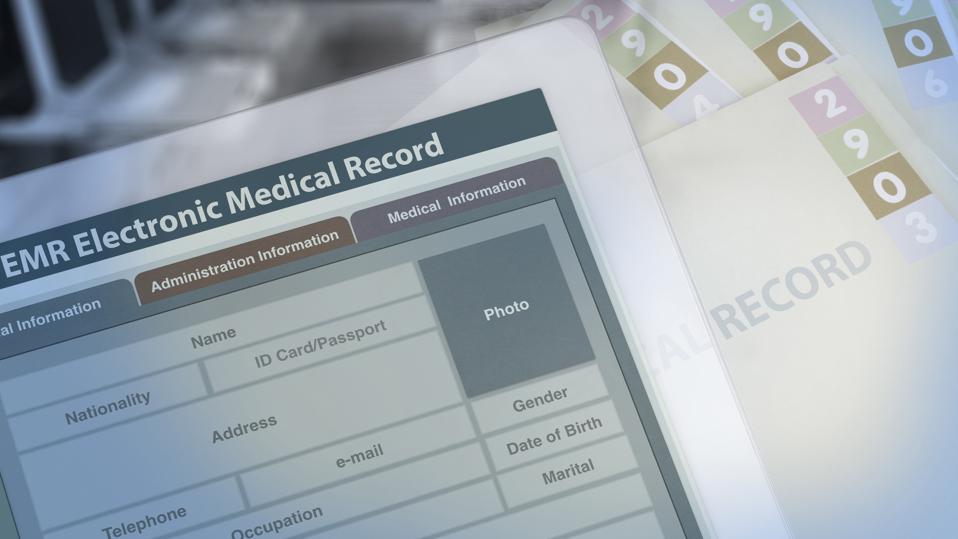
Whether you live in Calgary, Alberta and need hip surgery or live in Churchill, Manitoba and need to have a mole checked out to see if it cancerous, most Canadians have experienced both the marvel and shortcomings of the Canadian healthcare system.
And while the Canadian healthcare system is cherished, it is not perfect. The immense size of our country makes it difficult to access doctors and the alarmingly poor health of our citizens is stretching our resources very thin. And when we start a dialogue on how to fix healthcare, we too often go to the typical conversation of installing a two-tier system which leads to the same predictable results: For Canadians, a two-tier system is a non-starter.
Meanwhile, in the public realm, Canadians remain stranded in healthcare limbo.
Remote Communites

Take the people of Gananoque, Ontario as an example. It is a little tourist town on the Thousand Islands featuring 5,200 residents with half its population over the age of 50. And even though it sits 30min east of Kingston, Ontario, a large urban centre and home to the Royal Military College of Canada, it is still very much an isolated community if you need medical attention.
“We have no walk-in clinics and none of the family doctors are accepting new patients,” says Nicole Sanders, a retired paramedic from Arthur, Ontario who now lives in Gananoque. “That means my husband and I need to either drive 4.5 hours to see our regular GP back in Arthur or drive to Kingston and consult with a doctor that does not have our medical history.”
Things are worse when you consider that some people in Gananoque do not have the luxury of a vehicle, either due to age, finances, or disability.
This is even more pronounced for Canadians who live in remote regions. So difficult, in fact, that provincial governments have had to create programs specifically geared to address these problems. For example, the Northern Travel Grant Program covers the travel cost to patients living in Northern Ontario and live more than 100kms away from the nearest specialist or healthcare facility.
A report by CBC suggests there were 200,000 such applications in 2016 and the budget for the program is more than $50 million.
This is an all-too-common story in Canada and one that is usually told through the lens that suggests a two-tier system is the answer. And since that conversation usually leads to a dead end, instead, we suggest we take a hard look on how we can make the Canadian healthcare system work smarter, not harder.
20th Century Tools
In 2015, Cathy McMorris Rodgers, an elected member to the U.S. House of Representative, succinctly said what we all think about government: “Government is a 19th Century institution, using 20th Century tools, to solve 21st Century problems.”
And this has never been more true than it is for healthcare.

Take faxes, for example.
“We rely so much on faxes,” says Dr. Hannah Chan, who also holds a Masters in Healthcare Management from McMaster University and is the Chief Operating Officer of GetSkinHelp, a new Toronto-based startup focused on providing Canadians with greater access to healthcare. “I have no doubts the whole healthcare infrastructure would crumble if faxes were to magically disappear tomorrow.”
It is alarming. Referrals, prescriptions, consultation letters, appointment information, lab & imaging results, and even documentation for legal proceedings all depend on the reliability of thousands of fax machines scattered across Canada. Sometimes snail mail is the only option.
One reason why faxes are used so much is due to government regulations. Faxing is an established protocol that adheres to privacy laws and is, by definition, safe to use. And while they may be legally safe to use, they are laden with clerical burdens and responsible for much of the sluggishness found in healthcare.
NOTE: I would be remiss if I did not mention that many of those privacy laws were written decades ago without the foresight on how technology could (would) be used today.
Every fax received in a clinic or hospital needs to be digitized and recorded into an Electronic Medical Records system (software used to keep track of patient appointments, charting, billing, etc.), which alone can be very time consuming. They also need to be triaged in terms of urgency by the administrative team.
Not only are the clerical duties burdensome, but with so many analogue processes involved, basic human errors can take place and create even more delays. For example, sometimes faxes are hard to read and need follow-up calls. Sometimes faxes are sent to the wrong office. Sometimes faxes are lost behind a work desk. These are just a few of the realities behind the causes of long healthcare wait times in Canada.
Redundancy technology to quell redundancies

Earlier I mentioned EMRs, and they too present a problem of their own.
The best way to describe EMRs is that they are “off-the-shelf” software (like Microsoft Windows) that medical clinics and hospitals use to track patient care. The problem is, those EMRs are not generally geared to work with other EMRs.
For example, let’s say your family physician uses EMR #1 and refers you to a specialist who uses EMR #2. It is possible (even likely) that your patient data cannot be easily transferred from one EMR to the other, which means the specialist does not have a fulsome picture of your health.
…ever wondered why you need to keep filling medical history forms when you go see new doctors? This is why. There is no secure and convenient way to transfer your patient data from one doctor to another.
One reason is because there are no standards on how health data is collected and stored. EMR #1 might choose to use the label “First Name” while EMR #2 might choose the label “Surname.” This same kind of conflict can also apply to the address or date-of-birth formats. Now, extend this “standardization” problem to medical diagnoses, off-label use of prescription drugs, and personal history. It makes the transfer of the data from one platform to another extraordinarily difficult and costly.
Health Data Standards
For those a little older, this is not unlike how printers were once only compatible for either PC or Mac, and not both. Standards were then established and now most printers have dual compatibility. And while on the subject, some of the more popular data standards include government transit and weather data. They power many of your apps and generally make your life easier.
Now, let’s assume standards exist and the transfer of health data between EMRs is simple. From a security and privacy perspective, think of EMRs like forts. And inside those forts you will find patient data, billing data, and even clinic data. They are protected by the high and thick fort walls, but, once you open the drawbridge you lend yourself to attackers, and the internet is teeming with evil-doers.
The problem now becomes how do we securely transfer patient data from one EMR to another that meets the requirements of current laws and regulations?
Even if you wrap the data with an “digital” armour, like and armoured truck, and surround it by a “digital” cavalry, like a police squad, it is out in the open and liable to attacks. In fact, it is liable to multiple attacks from several different vectors. For example, in Canada, medical clinics and hospitals are not allowed to send information about your health, like diagnoses or test results, via email.
HIC’s and HINP’s
Lastly, EMRs were created in the late 20th century to enable a stronger patient circle-of-care and keep the network of healthcare practitioners, caregivers, and family members responsible for ensuring a person’s wellbeing well informed.
Ironically, and perhaps unfortunately, EMRs tend to keep the patient outside of their own care. While this is slowly changing, patients are still typically left in the lurch, which can be confusing and frustrating.
This is mostly due to the limitations of our own clairvoyance and the regulations we have placed on healthcare stakeholders. Right now, the healthcare system is designed to keep patient data in the hands of medical clinics/hospitals and kept secure through the EMR. This design is reflected through what many government health agencies call “Health Information Custodians” (HIC) and “Health Information Network Provider” (HINP) – these are the designations given to medical clinics/hospitals and EMRs respectively.
The law recognizes that your patient data belongs to you and that these stakeholders have a direct responsibility to safeguard your patient data and can be held accountable if our trust in them is misplaced.
In conclusion
The Canadian healthcare system has many flaws that can be remedied through technology and modifications to government regulations.
Companies like GetSkinHelp are applying their know-how to fix these problems. But, we do need help from the government.
There are many considerations whenever making systemic changes, least of which is patient safety. We know the public service is working diligently to satisfy hundreds, possibly thousands, of stakeholders, but now more than ever is where we need them to shine.
All to say, Canadian healthcare needs to work smarter because I doubt we can work any harder.
If you believe you have a skin concern that needs to be checked out, head over to our book now page. With virtual care, weekend appointments and no referral needed, healthy skin starts with GetSkinHelp.




